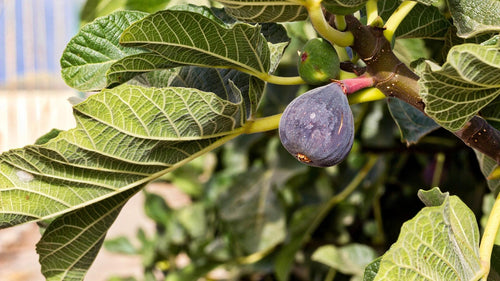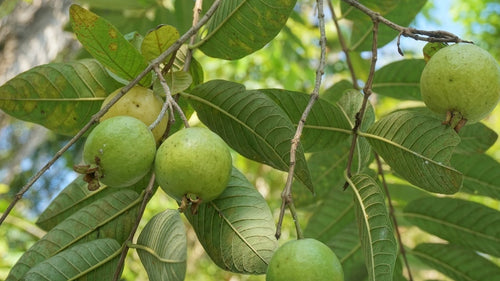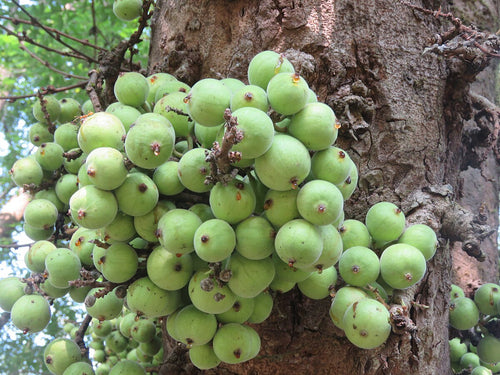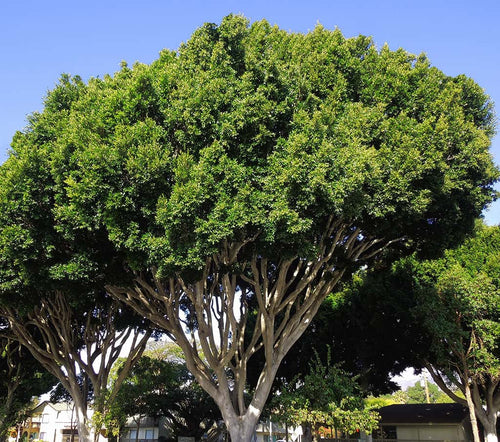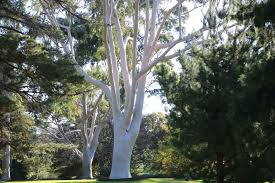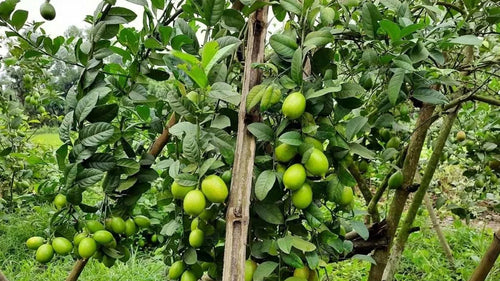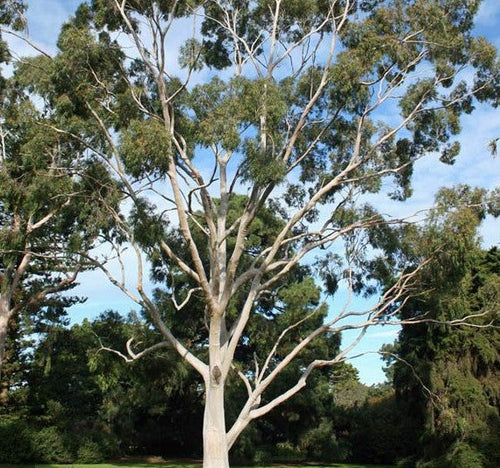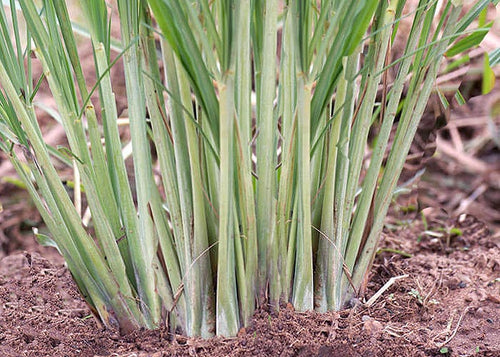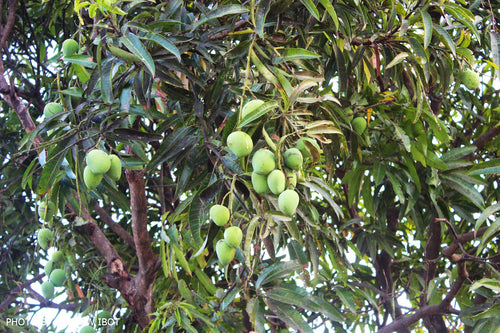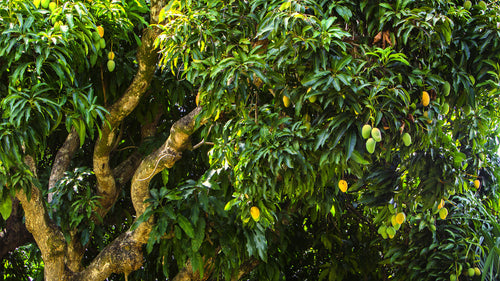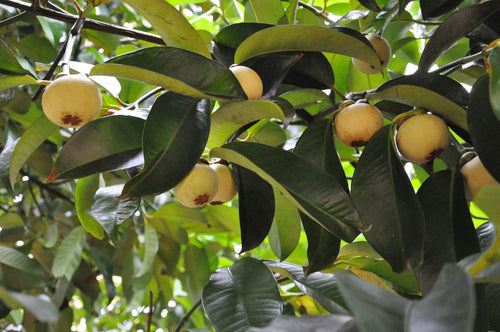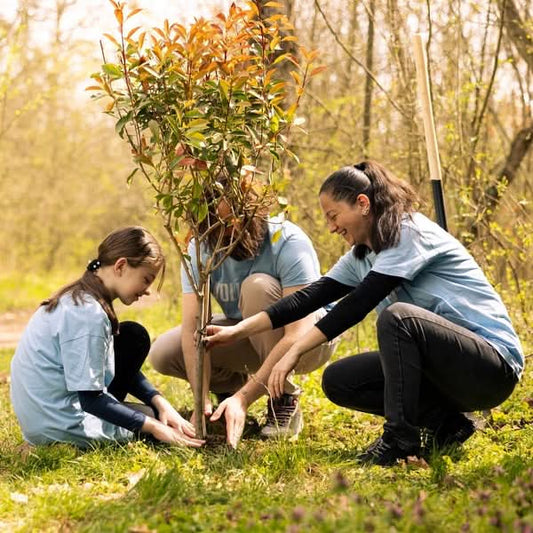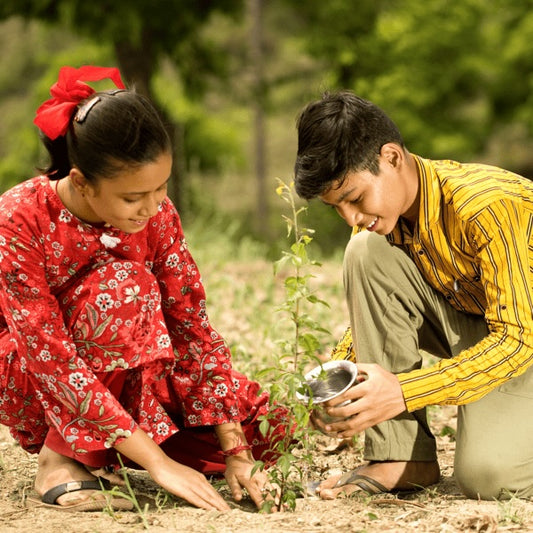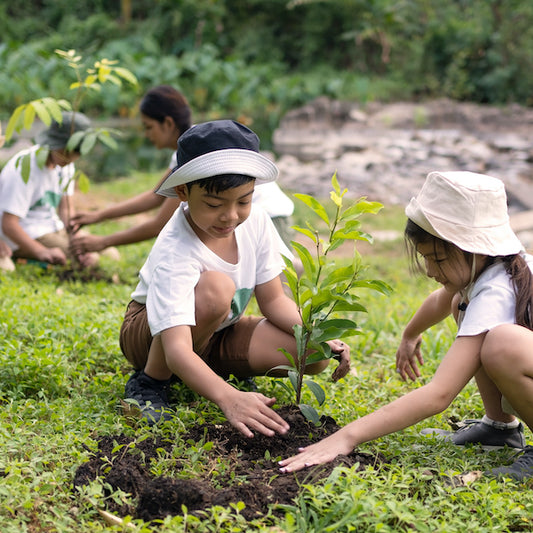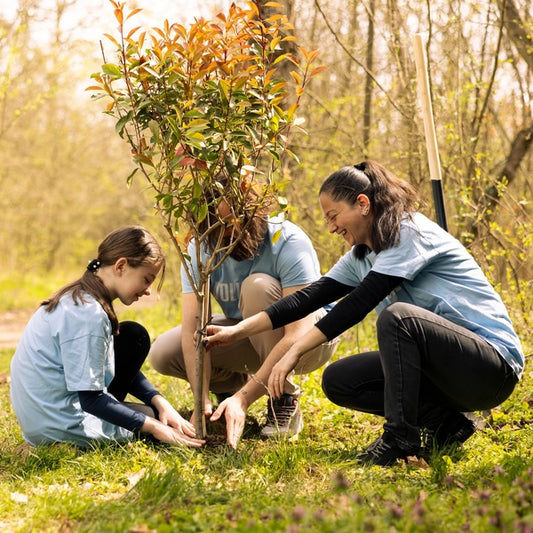Agroforestry for a Sustainable Tomorrow: Bajaj Allianz General Insurance's ESG Initiative
Bajaj Allianz General Insurance, through its vision of "A Legacy of Responsibility," is dedicated to creating a greener and more sustainable future. C Read more
Project Update 5


















Project Update 4








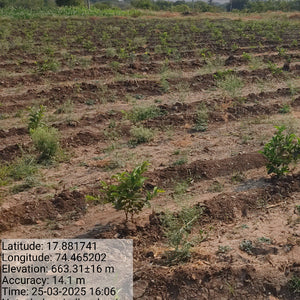
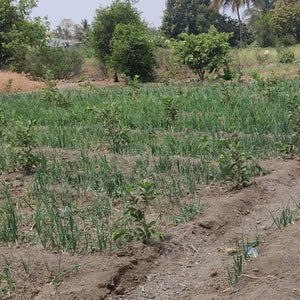
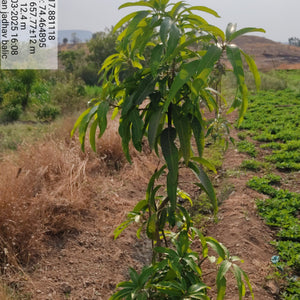
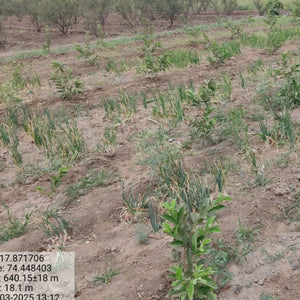
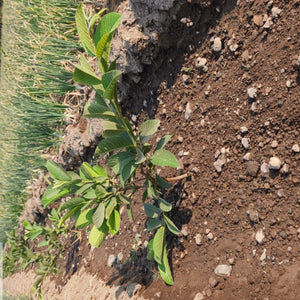
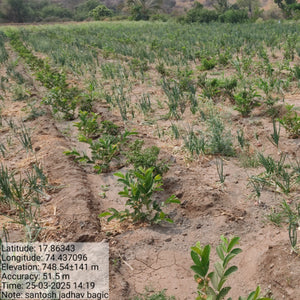
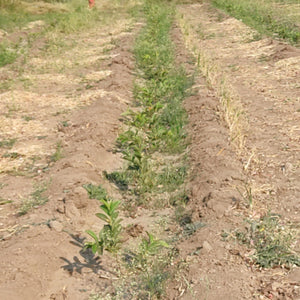
Project Update 3


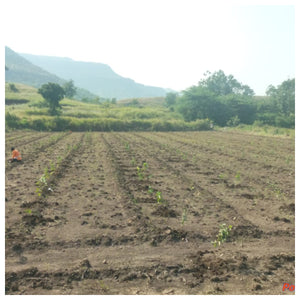
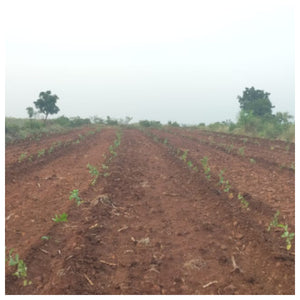

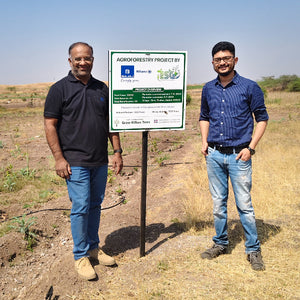
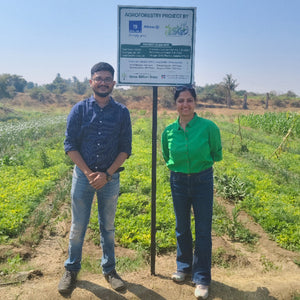
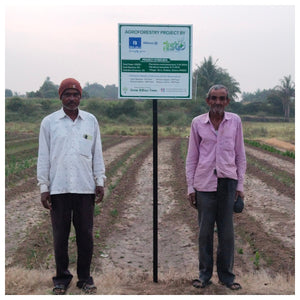
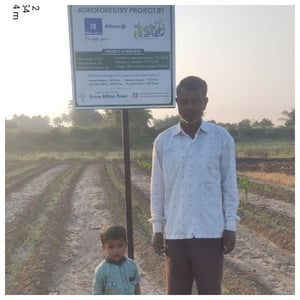
Project Update 2


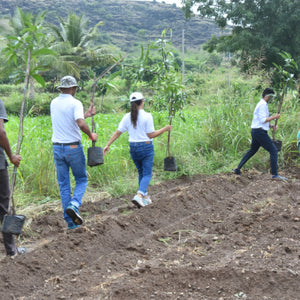
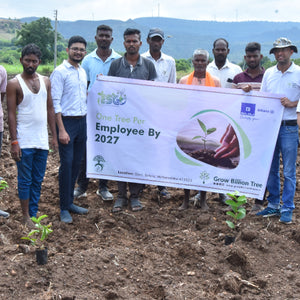
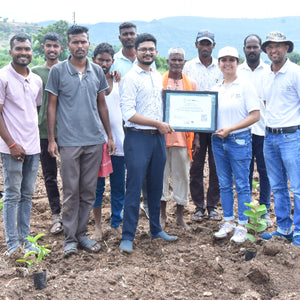

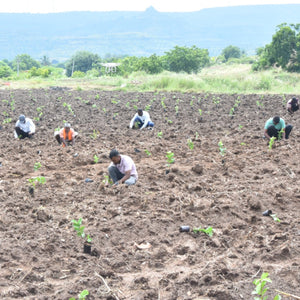
Project Update 1

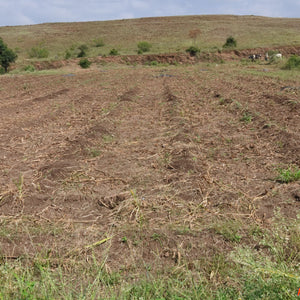


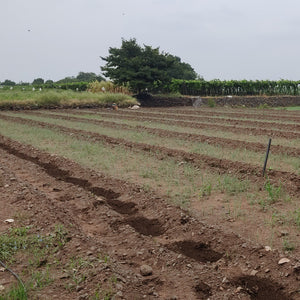



Digital Forest
Forest with 10,500 Trees planned
Want to plant your tree now?
Plant a Tree @ 299Agroforestry for a Sustainable Tomorrow: Bajaj Allianz General Insurance's ESG Initiative
Bajaj Allianz General Insurance, through its vision of "A Legacy of Responsibility," is dedicated to creating a greener and more sustainable future. Committed to planting one tree for each employee by 2027, the company embraces agroforestry as a core part of its environmental efforts. By integrating tree planting with agriculture, Bajaj Allianz aims to improve soil health, enhance biodiversity, and contribute to sustainable land use practices.
Additionally, this initiative boosts farmer income by offering resources like fruits and nuts, creating new revenue streams. This effort underscores the company's environmental responsibility while supporting long-term ecological balance and economic well-being, leaving a positive legacy for future generations.
Project Planning & Execution
No of Trees: 10,500
Plantation Location: Girvi Village, Phaltan Taluka, Satara, Maharashtra 415523
Plantation Duration: October 7th, 2024 to November 5th, 2024
Name of Species: Mango, Guava, Anjeer, Lemon
Species Selection & Its Benefits:
The project prioritizes selecting tree species that are native to the region and well-suited to the local climate, ensuring better survival rates and contributing to the long-term ecological health of the area. In addition to the environmental benefits, the chosen species are aligned with local market demand, ensuring that they offer viable income opportunities for farmers.
Farmer consent is a key part of the selection process, with their involvement ensuring the species chosen also complements their existing agricultural practices and preferences. By carefully balancing native species with market availability, such as fruit-bearing trees, the project supports both the economic stability of farmers and the ecological sustainability of the region.
This approach fosters a harmonious relationship between the environment and the community, ensuring that farmers can generate consistent income while contributing to the restoration of the local ecosystem.
-
Guava (Psidium guajava): Strengthens soil with its robust root system, enhances organic content, and supports wildlife habitat and biodiversity.
-
Mango (Mangifera indica): Reduces soil erosion, retains moisture, and attracts pollinators like bees and butterflies, benefiting the ecosystem.
-
Lemon (Citrus limon): Improves soil fertility and water retention through decomposing leaves, while attracting pollinators to support plant reproduction.
- Fig (Ficus carica): Prevents soil erosion with deep roots, provides food for birds and insects, and offers shade to retain moisture and support other plants.
Beneficiaries Details
Planting Methodology and Its Advantages
Agroforestry: The planting methodology for BAGIC’s agroforestry initiative focuses on providing farmer-centric benefits by integrating tree plantations into bunds and orchards.
This approach offers farmers diversified income through fruit-bearing trees, which have high demand in nearby markets, ensuring year-round productivity and financial stability.
Additionally, the trees enhance soil health and protect against adverse weather, contributing to improved crop yields. From an environmental perspective, this method boosts soil fertility, improves water retention, and reduces erosion. It also promotes biodiversity and supports carbon sequestration, helping to mitigate climate change impacts while fostering a resilient ecosystem.
Benefits of Agroforestry
-
Increased Farmer Incomes: This approach helps in increasing the farmer’s income by as much as 3 times. Farmers benefit from diversified income sources, lifting economic resilience.
-
Poverty Alleviation: By increasing farm productivity and income, agroforestry directly supports SDG 1 (No Poverty)
-
Environmental Sustainability: This model reduces carbon emissions and promotes sustainable land management, aligning with SDG 13 (Climate Action) and SDG 15 (Life on Land).
-
Food Security: Agroforestry enhances agricultural productivity and food availability by integrating fruit-bearing trees with crops, contributing to SDG 2 (Zero Hunger).
-
Carbon Sequestration: Trees planted through agroforestry absorb carbon dioxide, helping reduce greenhouse gas emissions and supporting BAGIC’s goal of achieving net-zero emissions.
-
Climate Resilience: Agroforestry helps mitigate climate change impacts by improving land productivity and fostering biodiversity.
-
Improved Soil and Water Management: Trees enhance soil fertility, reduce erosion, and increase water retention, resulting in more resilient farming.
Activities During Tree Plantation
The day before the plantation event, the ground team worked hard to prepare the land. Trenches were carefully dug to aid in water retention and prevent soil erosion, ensuring the ideal environment for the saplings. The saplings were then arranged in their respective spots, ready to be planted the following day. The atmosphere was filled with anticipation as we geared up for the big day.
On the day of the plantation, Mr. Abhishek Dole, ESG Lead at BAGIC, along with Ms. Nidhi Singh, CEO and Co-Founder, and Mr. Satender Kumar, CIO and Co-Founder of GBT, joined the farmers to kick off the event with great enthusiasm and dedication. Together with the farmers, it began by performing a traditional pooja in the fields to seek blessings for the project, and the trees were about to be planted. With the pooja complete, we proceeded to plant the saplings, carefully placing them in the prepared land. Natural fertilizer was added to ensure the trees' healthy growth. That day, we successfully planted 600 trees, and over the following month, the remaining saplings were planted, completing the plantation. This hands-on effort was not only about planting trees but also about building a connection with the land, the community, and our shared commitment to sustainability.
Conclusion Elements
Impact
Direct Impact
| Parameters | Values | References |
| No. of Trees Planted | 10,500 | |
| Green Cover (Acres) | 17.5 | |
| No of Farmers impacted | 20 | |
| Fruit Production Potential (Tons/Year) | 315.45 | |
| Income Generation Potential (Rs/Year) | 63,32,750 | |
| Carbon Sequestration Potential (KG) | 20 |
Small to medium-sized trees can sequester around 10–48 kilograms (22–106 pounds) of CO₂ annually. https://onetreeplanted.org/blogs/stories/how-much-co2-does-tree-absorb |
| Carbon Sequestration by 10,500 mature trees ( Tons/year) | 210 | No. of Trees x Carbon Sequestration by 1 mature trees per year |
| Carbon Credit Equivalent | 210 | One carbon credit is equivalent to one tonne of carbon dioxide or the equivalent amount of another greenhouse gas. |
| Carbon Footprint of an avg Indian Citizen (Tons/Year) | 1.8 | https://www.iea.org/countries/india/emissions |
| Offsets Annual Carbon Footprint of (Adults) | 116.7 | Carbon offset by 10500 mature trees per year / Carbon Footprint of an avg Indian Citizen per year |
*This impact analysis is forward-looking (An agroforestry project matures in 3-5 years)
Reference for Annual Production and Income Estimates of 10,500 Trees Planted
| SN | Plant Name | Fruit Selling Price (per KG in INR) | Annual Production per tree (in Kgs) | No. of Trees Planted | Total Yield (in Tons) | Total Income |
| 1 | Mango | ₹30 | 75 | 20 | 1.5 | ₹45,000 |
| 2 | Guava | ₹20 | 30 | 10,390 | 311.7 | ₹6,234,000 |
| 3 | Anjeer (Fig) | ₹20 | 25 | 20 | 0.5 | ₹10,000 |
| 4 | Lemon | ₹25 | 25 | 70 | 1.8 | ₹43,750 |
| Total | 315.5 | ₹6,332,750 |
Indirect Impact
Community Impact
-
Renewed Sense of Hope: The project has instilled a belief in farmers that their land can yield not just crops, but trees that will benefit future generations, fostering long-term commitment to sustainability.
-
Strengthened Community Bonds: The collective effort of farmers, volunteers, and stakeholders has united the community in creating something enduring, fostering a shared sense of purpose and pride.
-
Empowerment of Women and Youth: The project provides women with opportunities to actively participate in sustainable farming practices while inspiring youth to embrace agricultural innovation and environmental stewardship.
-
Legacy of Environmental Stewardship: The initiative has sparked a cultural shift towards environmental consciousness, with farmers passing on the values of sustainability to future generations.
-
Cultural Transformation: Farming has evolved from a livelihood to an act of love and legacy, with communities embracing their role in preserving the environment for the future.
Environmental Impact
-
Soil Health: 10,500 trees enhance soil fertility, prevent erosion, and improve nutrient retention.
-
Biodiversity: The diverse tree species foster local wildlife and ecological balance.
-
Carbon Sequestration: Trees capture carbon, helping mitigate climate change.
-
Water Retention: Improved water infiltration and retention benefit crops, especially in water-scarce areas.
-
Environmental Protection: Reduced reliance on chemical fertilizers promotes sustainable farming.
- Climate Resilience: Trees boost resilience to extreme weather, supporting farmers’ adaptation.
Achievements
SDG Goals Achieved through Agroforestry
-
SDG 1 (No Poverty): Agroforestry enhances the livelihoods of local farmers by providing them with multiple income streams through the cultivation of fruit-bearing trees and other crops. By improving agricultural productivity and offering sustainable employment opportunities, this initiative plays a vital role in poverty alleviation for rural communities.
-
SDG 2 (Zero Hunger): Agroforestry enhances agricultural productivity by improving soil health, reducing the need for chemical fertilizers, and providing additional food and income sources for local farmers through the cultivation of fruit-bearing. This initiative directly contributes to food security and economic stability for rural communities.
-
SDG 5 (Gender Equality): The initiative actively promotes the involvement of women in agroforestry practices, empowering them with knowledge, resources, and decision-making roles. Fostering gender-inclusive participation contributes to reducing inequalities and supporting women’s economic independence.
-
SDG 6 (Clean Water and Sanitation): Agroforestry practices contribute to water conservation through techniques like drip irrigation and natural water retention by tree root systems. These measures ensure sustainable water management, improving access to clean water for agricultural and community use.
-
SDG 9 (Industry, Innovation, and Infrastructure): By integrating innovative practices like drip irrigation and sustainable land management techniques, the initiative supports resilient agricultural infrastructure and drives eco-friendly innovation in farming. These advancements improve productivity and reduce environmental degradation.
-
SDG 10 (Reduced Inequalities): The agroforestry initiative bridges economic and social gaps by providing equal opportunities for small-scale farmers and marginalized groups. Through targeted support and partnerships, it ensures inclusive benefits for all participants, fostering equitable development.
-
SDG 12 (Responsible Consumption and Production): BAGIC General Insurance's agroforestry initiative emphasizes sustainable land management practices, integrating trees with crops to promote efficient resource use and reduce agriculture's environmental footprint. The adoption of drip irrigation systems ensures precise water delivery, minimizing wastage and enhancing productivity. By fostering responsible production processes, this initiative supports long-term ecological balance, sustainability, and improved livelihoods for farmers.
-
SDG 13 (Climate Action): The agroforestry initiative contributes to climate change mitigation by sequestering carbon through large-scale tree planting. By reducing carbon dioxide levels, BAGIC General Insurance plays a critical role in addressing global climate challenges while advancing toward its goal of achieving net-zero emissions by 2027.
-
SDG 15 (Life on Land): Agroforestry helps restore degraded land, enhance ecosystem health, and promote biodiversity by utilizing native tree species. This initiative protects and conserves natural habitats, ensuring a sustainable balance between agricultural productivity and environmental conservation.
-
SDG 16 (Peace, Justice, and Strong Institutions): The initiative encourages community-led governance and collaborative decision-making processes, fostering trust and cooperation among stakeholders. By promoting inclusive and transparent practices it helps strengthen local institutions and supports peaceful, sustainable development efforts.
- SDG 17 (Partnerships for the Goals): Through a strategic alliance with Grow Billion Trees, BAGIC has effectively integrated tree plantations within agricultural systems, promoting sustainable land use practices that benefit both local communities and the environment. Grow Billion Trees played a key role in bridging the company with local farmers, providing them with the resources, knowledge, and support necessary to implement agroforestry effectively. By fostering this multi-stakeholder collaboration, BAGIC contributed to SDG 17, engaging private sector partners, local farmers, and environmental organizations. This partnership has empowered farmers to adopt sustainable practices, thereby improving their economic and social well-being while advancing environmental goals.
ESG Achieved through Agroforestry
-
Environmental Impact: BAGIC’s agroforestry initiative is dedicated to enhancing ecosystem health and biodiversity through its commitment to planting one tree for every employee by 2027. By integrating tree plantations within agricultural landscapes, the company promotes soil health by improving nutrient cycling and moisture retention, reducing the need for chemical inputs. This initiative also plays a vital role in carbon sequestration, absorbing carbon dioxide and helping mitigate climate change. The use of native tree species supports local ecosystems, fosters biodiversity, and helps restore degraded lands, contributing to a healthier and more sustainable environment.
-
Social Responsibility: BAGIC underscores social responsibility by actively involving local communities and farmers in its agroforestry initiative. The program provides training for farmers in sustainable agricultural practices, equipping them with the knowledge and skills to improve land management. The cultivation of fruit-bearing trees offers farmers additional economic opportunities, thereby enhancing livelihoods and reducing poverty in rural areas. The company also promotes inclusivity by encouraging the participation of women in agroforestry activities, supporting gender equality, and empowering communities to adopt sustainable practices.
- Governance: BAGIC embeds transparency, accountability, and ethical practices in its tree plantation efforts. Through its partnership with Grow Billion Trees, the company ensures that all tree planting is conducted sustainably, meeting its environmental commitments. Full transparency is maintained by providing geo-tagged plantation locations and progress tracking, with regular updates shared with stakeholders. Internal audits and annual progress reports assess the environmental, social, and economic impacts of the initiative, ensuring ongoing accountability. By adopting this transparent and accountable governance approach, BAGIC aligns its agroforestry initiative with its ESG (Environmental, Social, and Governance) goals. The initiative reflects the company’s commitment to sustainability, responsible land management, and its broader vision of "A Legacy of Responsibility," creating long-term value for employees, farmers, and the environment.
Building Communities
One of the most remarkable outcomes of this agroforestry project was the sense of unity and collaboration it fostered within the community. By engaging local farmers, stakeholders, and volunteers, the initiative became more than just a plantation drive it evolved into a shared mission to create a sustainable future.
-
Empowering Farmers: Farmers became active participants, not just beneficiaries, learning sustainable agroforestry practices that integrated seamlessly with their livelihoods. This newfound knowledge and ownership strengthened their confidence and resilience.
-
Fostering Partnerships: The project brought together diverse groups, including BAGIC, Grow Billion Trees, and local communities, showcasing the power of partnerships in achieving common goals.
-
Creating a Ripple Effect: As the farmers witnessed the benefits of agroforestry, their enthusiasm inspired neighboring communities to explore similar sustainable practices, amplifying the project’s impact.
This initiative proved that environmental sustainability thrives when rooted in community effort. It’s not just about planting trees, it’s about planting hope, collaboration, and a shared vision for a greener tomorrow.
GBT Commitments
-
Sustainable Plantation Efforts: GBT implements projects that balance environmental, social, and economic goals, addressing issues like urban heat islands and degraded farmlands. These efforts promote ecological balance, livelihoods, and long-term climate resilience.
-
Enhancing Ecosystem Health: By selecting native species and creating diverse habitats, GBT enhances biodiversity and ecosystem resilience, ensuring long-term ecological health and supporting wildlife.
-
Ensuring Tree Survivability: GBT prioritizes native species, continuous monitoring, and soil health improvement using organic fertilizers. These efforts ensure sustainable growth and benefit the farmers and communities.
-
Transparency & Accountability: GBT provides detailed reports on tree growth, survival rates, and carbon benefits, using geo-fencing and regular updates to maintain transparency and effectiveness.
-
Long-Term Impact: GBT’s initiatives tackle environmental challenges, enhance rural livelihoods, foster climate resilience, and promote sustainable development while reducing carbon footprints.
Acknowledgment
We at Grow Billion Trees extend our deepest gratitude to all those who have contributed to the success of the agroforestry project in Girvi, Satara (Maharashtra). This initiative, which has transformed the landscape and lives of many, would not have been possible without the support and collaboration of dedicated individuals and organizations.
-
To BAGIC: We sincerely thank you for your unwavering commitment to environmental sustainability. Your vision for a greener, more responsible future provided the foundation for this impactful project. Together, we’ve planted not just trees, but a legacy for generations to come. Your support in this initiative has paved the way for a brighter and more sustainable future for both the environment and the local farming community.
-
To the Farmers of Girvi, Satara (Maharashtra): Your trust in the agroforestry model has been truly inspiring. By welcoming this initiative into your fields, you have not only enriched your land but have also created a ripple effect of positive change in your community. Your dedication to sustainable practices will benefit future generations, and we are honored to be a part of this journey with you. The economic and environmental transformation you are fostering is a model for others to follow.
-
To the Local Community: The enthusiasm, hard work, and support of the community have been the driving force behind this project. It is your collective spirit that has turned this vision into reality, and for that, we are truly grateful. The positive changes you are experiencing today are a result of your shared commitment to creating a greener and more prosperous tomorrow.
-
To Our Partners and Volunteers: Your tireless efforts, expertise, and passion for environmental stewardship have been invaluable. You have shown that when we come together, there is no challenge too great to overcome, and no goal too distant to reach. Your contributions to this initiative have made a lasting impact, and we are deeply thankful for your collaboration.
Together, we have made significant strides in promoting sustainable agriculture, restoring ecosystems, and improving livelihoods. This is just the beginning, and we look forward to continuing our partnership to create a greener, more sustainable world for all.
Thank you for your support and dedication.
Closing Remarks
Bajaj Allianz General Insurance is committed to sustainability through its ambitious agroforestry initiative. As part of their ESG vision, "A Legacy of Responsibility," this effort focuses on reducing carbon emissions, restoring farmlands, and promoting biodiversity. The initiative supports local farmers by improving soil health and water conservation through agroforestry techniques. By integrating sustainability into their core values, Bajaj Allianz is making strides toward achieving net-zero greenhouse gas emissions while enhancing environmental resilience and community well-being.
Trees for Corporates
Trending
Most Popular
1. Agroforestry benefits
trees and crops growing together, improving soil health, biodiversity, and farmers' income. Bajaj Allianz General Insurance knows that planting one tree for each employee by 2027 isn’t just a green gesture—it’s an investment in climate resilience. With agroforestry, you get trees soaking up carbon while crops flourish in richer, more fertile soil. Not to mention, local farmers get a sustainable livelihood boost. It’s like having a superhero team for the environment and agriculture, all working together for a greener planet. Let’s hear it for multitasking trees!
2. Carbon sequestration in agroforestry
Who knew trees could be such overachievers? Carbon sequestration in agroforestry is nature’s answer to climate change. Trees suck up all that excess carbon dioxide floating around, turning it into biomass like a pro. And Bajaj Allianz General Insurance is using this green power to reduce its carbon footprint. Every tree planted in their agroforestry initiative is a carbon superhero, working overtime to keep the atmosphere cool. By 2027, when they’ve planted one tree for each employee, those carbon offsets will add up to a big environmental win. Take that, climate change!
3. Tree plantation sustainability
Tree plantation sustainability is more than just sticking a sapling in the ground and hoping for the best. It’s about making sure those little green warriors survive and thrive, just like Bajaj Allianz General Insurance plans to do with its one-tree-per-employee goal by 2027. By focusing on agroforestry, they ensure these trees don’t just grow—they contribute to the environment and local farming economies. With proper care and management, tree plantations become self-sustaining ecosystems, boosting biodiversity and reducing the environmental impact. Sustainable trees for a sustainable future? Yes, please!
4. Biodiversity in agroforestry
Biodiversity in agroforestry is like nature’s version of a potluck—every plant and animal brings something to the table! When Bajaj Allianz General Insurance plants trees alongside crops, they’re not just adding greenery—they’re inviting a whole host of species to the party. Birds, insects, and even microorganisms show up to enjoy the benefits of a rich, diverse ecosystem. And the more biodiversity, the better the environment functions. This natural balance improves soil health, pest control, and crop yields. It’s like throwing a never-ending, eco-friendly bash where everyone wins.
5. Corporate social responsibility and tree plantation
Corporate social responsibility (CSR) and tree plantation go together like peanut butter and jelly—especially for companies like Bajaj Allianz General Insurance. Their "A Legacy of Responsibility" initiative takes CSR to new heights, with a goal to plant one tree for every employee by 2027. It’s a win for the company, a win for the environment, and a win for the communities they serve. This green initiative not only reduces their carbon footprint but also boosts local economies through agroforestry. CSR has never looked so green—or so impactful!
6. Water conservation in agroforestry
Water conservation in agroforestry is like giving the planet a hydration boost—one tree at a time. Bajaj Allianz General Insurance’s agroforestry initiative helps trees and crops work together to retain water, reduce runoff, and recharge groundwater. It’s like a natural irrigation system that makes sure both plants and farmers stay happy and hydrated. As part of their commitment to sustainability, the trees they plant will improve water retention in soil, making it a smart strategy for areas prone to water scarcity. Who knew trees could double as water wizards?
7. Climate resilience through tree planting
Climate resilience through tree planting is like having an environmental insurance policy—one that Bajaj Allianz General Insurance is more than happy to underwrite! By integrating agroforestry into their sustainability plans, they’re ensuring that both local ecosystems and agricultural landscapes can weather the storm—literally. Trees help buffer against the effects of climate change, from droughts to floods, by stabilizing soil and reducing runoff. And with their one-tree-per-employee goal by 2027, Bajaj Allianz General Insurance is giving communities a natural defense system against climate-related challenges. Talk about planting the seeds for a brighter future!
8. Tree plantation transparency
Tree plantation transparency isn’t just about showing off how many saplings you’ve planted—it’s about accountability. Bajaj Allianz General Insurance knows that planting trees is only half the battle. That’s why they partner with organizations like Grow Billion Trees to ensure full transparency. Geo-tagging, survival rate updates, and regular progress reports keep everyone in the loop. By 2027, they’ll have a detailed record of every tree planted, making sure their green promises are more than just lip service. With tree plantation transparency, it’s all about walking the green talk—one tree at a time!
FAQ
What is the goal of Bajaj Allianz General Insurance's tree plantation initiative?
Bajaj Allianz General Insurance is committed to planting one tree for every employee by 2027 as part of its "A Legacy of Responsibility" initiative. This effort supports sustainable land use through agroforestry, helping to improve biodiversity, enhance soil health, and contribute to climate resilience. By planting these trees, the company is making a significant investment in the environment while also helping local communities.
How does agroforestry benefit the environment?
Agroforestry combines trees with agricultural crops, creating a sustainable land-use system. It improves soil health, boosts biodiversity, and reduces carbon emissions by sequestering carbon dioxide. Bajaj Allianz General Insurance’s commitment to agroforestry helps combat climate change and promotes long-term environmental health.
How does agroforestry help farmers?
Agroforestry supports farmers by improving soil fertility and water retention, leading to better crop yields. It also offers additional income sources through fruit-bearing trees and timber. Bajaj Allianz General Insurance’s agroforestry initiative empowers local farmers with sustainable practices that benefit both the environment and their livelihoods.
What is carbon sequestration in agroforestry?
Carbon sequestration in agroforestry refers to the process where trees absorb and store carbon dioxide from the atmosphere. Bajaj Allianz General Insurance’s tree plantation efforts actively contribute to reducing greenhouse gas levels, helping the company work toward its goal of becoming net-zero in carbon emissions.
How does Bajaj Allianz General Insurance ensure transparency in tree plantations?
Bajaj Allianz General Insurance partners with organizations like Grow Billion Trees to ensure full transparency. The company provides geo-tagged plantation locations, progress updates, and survival rate reports, ensuring stakeholders can track the impact of the initiative.
What are the social benefits of Bajaj Allianz General Insurance’s agroforestry initiative?
The agroforestry initiative creates economic opportunities for local farmers and supports gender equality by encouraging the active participation of women. Bajaj Allianz General Insurance works with communities to promote sustainable agricultural practices, ensuring that environmental and social benefits are shared.
What kind of trees are planted in Bajaj Allianz General Insurance’s initiative?
Bajaj Allianz General Insurance focuses on planting native tree species in its agroforestry initiatives. Native trees are better suited to local ecosystems, promote biodiversity, and require less maintenance, ensuring long-term sustainability and higher survival rates.
How does tree plantation help in climate resilience?
Tree plantation through agroforestry helps build climate resilience by stabilizing soil, reducing water runoff, and improving water retention. Bajaj Allianz General Insurance’s tree planting efforts create a buffer against climate-related issues like drought and flooding, making agricultural landscapes more resilient.
How does the tree plantation initiative support Bajaj Allianz General Insurance’s ESG goals?
The tree plantation initiative directly aligns with Bajaj Allianz General Insurance’s Environmental, Social, and Governance (ESG) goals. It promotes environmental sustainability through carbon sequestration and biodiversity, social responsibility by supporting local farmers, and governance by ensuring transparency in all plantation efforts.
What are the long-term environmental impacts of Bajaj Allianz General Insurance’s tree plantation initiative?
The long-term impacts include enhanced biodiversity, improved soil health, and significant carbon sequestration. Bajaj Allianz General Insurance’s initiative helps restore degraded land, reduce the need for chemical fertilizers, and contribute to climate change mitigation, creating a lasting positive effect on both the environment and communities.
- Choosing a selection results in a full page refresh.
- Opens in a new window.


